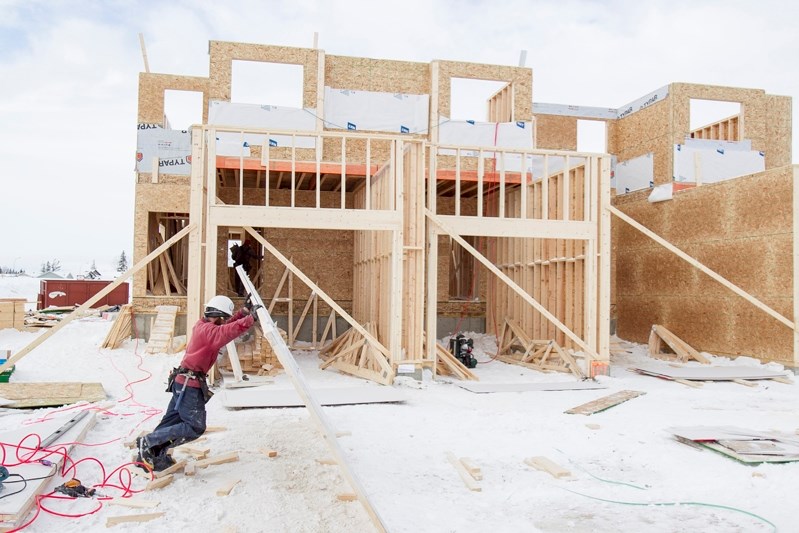The annual rate of housing starts was up eight per cent in September compared to the previous month, according to the Canada Mortgage and Housing Corporation, but development in rural areas again showed signs of slowing.
The national uptick in seasonally adjusted annual housing starts is largely attributable to urban areas, where the pace of development rose nine per cent to 250,766 in September. Multi-unit urban starts increased by 10 per cent, compared to a three per cent rise in single-detached homes.
In rural areas, housing starts dropped from 19,804 in August to a yearly low of 19,700 in September. The rate of rural housing starts has fallen 30 per cent since January, according to CMHC data.
Like more populous centres, many rural communities have shifted housing priorities to apartments, row housing, and other higher-density projects. When it comes to convincing developers to take on these projects, however, cities are provided with an array of data to bolster investor confidence that rural centres are not.
“We have plenty of interest and plenty of service and serviceable land. What we lack is execution by the developer,” said Brent Williams, CAO for the Town of Olds.
“The biggest thing I hear from the developer community, which is not local, is that there is just not enough information to provide confidence with the investment that larger centres get. And I would argue that a huge part of that confidence comes from the CMHC and Statistics Canada's own data, or lack thereof,” Williams said.
CMHC collects monthly housing starts and completions data for cities over 50,000, and quarterly data on starts in centres over 10,000. CMHC provides housing starts estimates for rural areas, but no further breakdown for specific rural communities.
Rental vacancy rates and absorption rates for new builds are available for major centres through CMHC or StatCan data, whereas in smaller towns either the developer or the municipality must spend the money to determine housing need, Williams said.
“That lack of confidence driven by the lack of information in small communities, I think, is in some part due to the government's lack of information and stats gathered,” Williams said.
“Less than 10 per cent of new home construction activity takes place in rural areas. More frequent and granular reporting for these areas would not be cost effective for the amount of data that would be collected and reported,” a CMHC spokesperson said.
Olds recently spent about $15,000 on a third-party housing needs assessment, but the town didn’t have the budget for more empirical research that includes vacancies and absorption rates, Williams said. This information will be brought to council semi-regularly to build a better understanding of what the local housing stock is, “because that is what developers are telling us they require.”
“If rural housing development is important for either level of government, it seems to be a pretty small step to achieve economies of scale and just do a better job gathering and analyzing this data for rural communities, instead of just showing us stats that we're not doing well. We already know that. Help us fix it,” Williams said.
The datasets on housing construction from StatCan or CMHC lump communities under 10,000 inhabitants together, meaning a remote settlement with no road access and a town just outside of Calgary are considered equally rural, and the “different realities” of those places are lost, said Kabir Shahani, capital funding manager at the Rural Development Network’s Sustainable Housing Initiative.
“There is a lot of data suppression because the population sizes are very small. And then there is also the fact that a lot of areas, they're just not really surveyed, or you can't really access those surveys and get a good picture of what the realities are on the ground,” Shahani said.
Rural communities also have trouble attracting developers because there can be additional costs to bring in materials and labourers for the project, in some cases because the limited rentals available in a community makes it tough to house the workers through the duration of the project, he said.
This summer, the CMHC created specific rural and remote funding streams through its Housing Accelerator Fund and is providing GST relief for developers on purpose-built rental units, which Shahani said will help drive development in rural areas.
“A lot of those incentives for rural municipalities were to attract developers, especially from the private sector to come and develop through key incentives like property tax rebates and transferring municipal-owned land to private sector developers,” Shahani said.
“I think that we will see some change because of programs like the Housing Accelerator Fund. They have paid some special attention to rural and remote communities,” he said.
“But it will take time for the impacts of that and the GST rebate to show themselves.”



